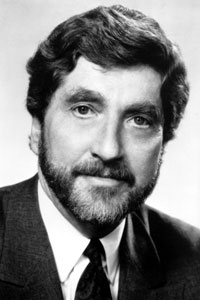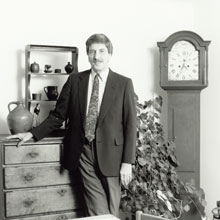About David H. Smith

David H. Smith, MD.
University of Rochester, 1958
Pediatrician, Researcher, Visionary,
Conservationist and Leader
David Hamilton Smith lived a fully engaged life, relishing and perfecting its multiple possibilities: physician, researcher, teacher, mentor, entrepreneur, conservationist, philanthropist, husband, and father. Dr. Smith's constant quest for knowledge and his determination to reach self-set goals have brought to the world gifts of lasting benefit.
David Smith grew up in Canton, Ohio, where his father taught science and his mother tutored youngsters in mathematics. From his parents he inherited a love for the biological sciences and a respect for the rigors that the scientific method demands. At Ohio Wesleyan (his mother's alma mater), David had a brilliant undergraduate career. In addition to being elected to Phi Beta Kappa in his junior year, he served as student body president and yearbook editor.
Dr. Smith found his true calling while a medical student at the University of Rochester in the early 1950s. There he was given the opportunity to spend a full year working in the laboratory of a faculty mentor, microbiologist Herbert R. Morgan, where he studied the cytopathogenic effect of viruses. That 'year-out' program changed my life,
he would say later.
After training in pediatrics at Children's Hospital Medical Center in Boston, Dr. Smith served as a captain in the US Army in Japan. While a medical officer, he became the first to link chronic granulomatous disease to a deficiency in white cells. Back at Harvard, he continued his postdoctoral research in molecular genetics and bacteriology and served as chief of lnfectious Diseases at Children's Hospital from 1965 to 1976.
Harvard's legendary professor, Charles Janeway, an early researcher on the human immune system, became Smith's role model and mentor. At a time when much research focused on antibiotics, Janeway challenged his young doctors to expand their vision. At the bedside of a child enduring the agony of meningitis, Janeway said, One of you should try to find a vaccine to prevent this terrible disease.
David Smith took up that challenge, and a I5-year quest was begun.

While at Harvard, he continued studying the biology and epidemiology of bacterial drug resistance factors and in 1968 began the search for a vaccine to protect against Hemophilus influenzae b., the cause of bacterial meningitis. Working in close partnership with Dr. Smith was his research colleague Porter W. Anderson, Ph.D.
The best research, Dr. Smith believed, begins at the bedside. At that time, 10,000 children were diagnosed annually with meningitis. Five percent of infected children died. Thirty percent of the survivors were left with some long-term disability, including mental retardation, acquired deafness, and learning disabilities.
In 1976, Dr. Smith was called back to the University of Rochester to chair the Department of Pediatrics. His first goal was to enhance the basic science programs of this already strong department. A visionary, a brilliant strategist, and a demanding chief, Dr. Smith created new specialty divisions, recruited nationally-known division chiefs who shared his goals, and advanced the concept of a children's hospital
within a hospital. By 1983, he had published some seventy articles in medical publications, authored textbook chapters, editorials and reviews, and garnered numerous awards.
During these years, Dr. Smith and his research team worked flat out on the search for a Hib vaccine. By the early 1980s, the first Hib vaccine had been tested, licensed, and was being produced in a small laboratory within the medical school. Stung by the resistance of any major pharmaceutical company to buy rights to the vaccine, Dr. Smith decided to create his own pharmaceutical firm. In 1983, he resigned his chairmanship and founded Praxis Biologics.
As director of the CDC, I saw first-hand the influence of the H flu vaccine. I witnessed the virtual elimination of hemophilus influenza meningitis because of research done in Rochester by David Smith and Porter Anderson.
-U.S. Surgeon-General, David Satcher, M.D.
In record time, Smith built state-of-the-art laboratories in Rochester and North Carolina and led the Praxis team's successful effort to bring to bring to market the Hib vaccines and to expand their new conjugate immunochemical technology. By 1989, Praxis had the largest number of new vaccines in clinical trials and one of the finest manufacturing facilities in North America. The initial Hib vaccine (1990) was the first vaccine to be licensed in the U.S. in a decade. The second, a conjugate vaccine, was the first to be licensed for universal use with infants since the rubella vaccine for measles and mumps.
In 1996, Dr. Smith and Dr. Anderson received the prestigious Albert Lasker Clinical Medical Research Award for visionary leadership
in developing the Hib vaccine, one of the medical success stories of the 20th Century. That same year, both also received the Pasteur Award from the World Health Organization.
Following the sale in 1988 of Praxis to American Cyanimid, Dr. Smith found a new focus in advising biomedical entrepreneurs. At the same time, his summer home on Martha's Vineyard sensitized him and his wife, Joan, to the fragile nature of an increasingly stressed natural environment. His program of land conservation on the Vineyard culminated in the establishment of The Polly Hill Arboretum, a 60-acre tract home to more than 2,000 species of woody plants. The Arboretum, developed and managed for decades almost single-handedly by Mrs. Hill, a dedicated and self-taught botanist, has become a mecca for horticulturalists and a stimulating learning environment for teachers.
David Smith's interest in conservation and his passionate belief in the ability of science to solve real problems through basic research is having broad results. Working with The Nature Conservancy, he formed the David H. Smith Conservation Research Fellowship Program which supports the work of 48 postdoctoral fellows.